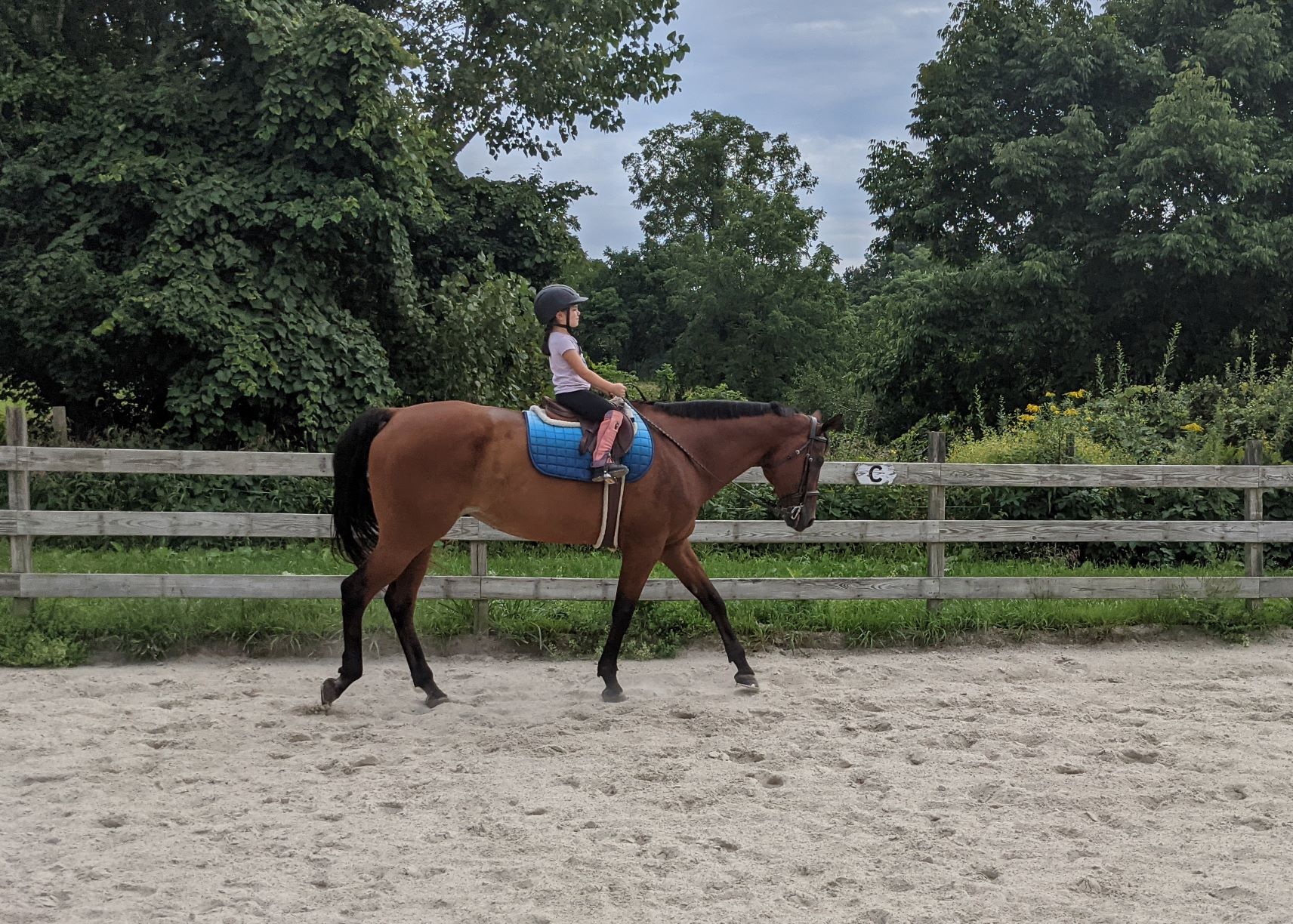So, you’ve found a riding instructor and started taking lessons. Now that you’ve had a couple of lessons you’re learning how to trot, it’s pretty bumpy and you’re finding it hard to balance. So, your instructor introduces you to posting. As if it isn’t difficult enough to go up and down in rhythm without your hands and feet moving all over the place, now your instructor is making things even more complicated! You have to pick up the correct diagonal!
If you’re feeling a bit overwhelmed, don’t worry! In this article we’ll talk about the purpose of posting on the correct diagonal and how to do it!
This post may contain affiliate links which means that I may earn a small commission at no extra cost to you. As an Amazon Associate I earn from qualifying purchases.
What Is A Diagonal?
Wondering what it even means to be on a diagonal? At the trot, a two beat gait, the horse’s legs travel in diagonal pairs. Meaning that on the first beat one front and one hind leg move forward together (ie: right front and left hind) and on the second beat the other two legs move forward together. Check out the graphic below to see which feet move together in the trot.
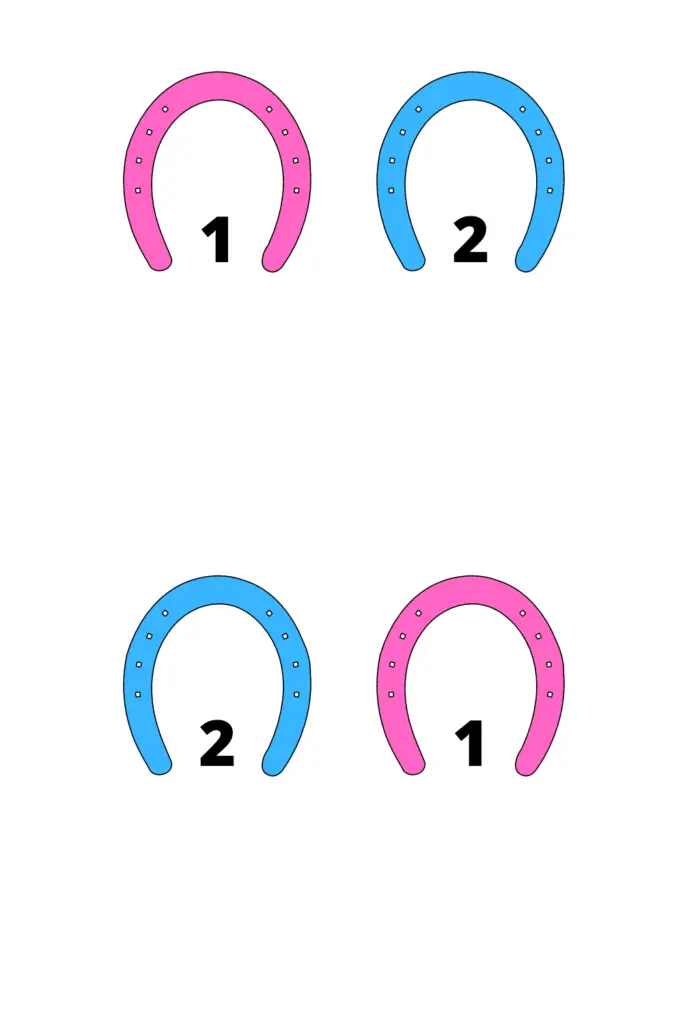
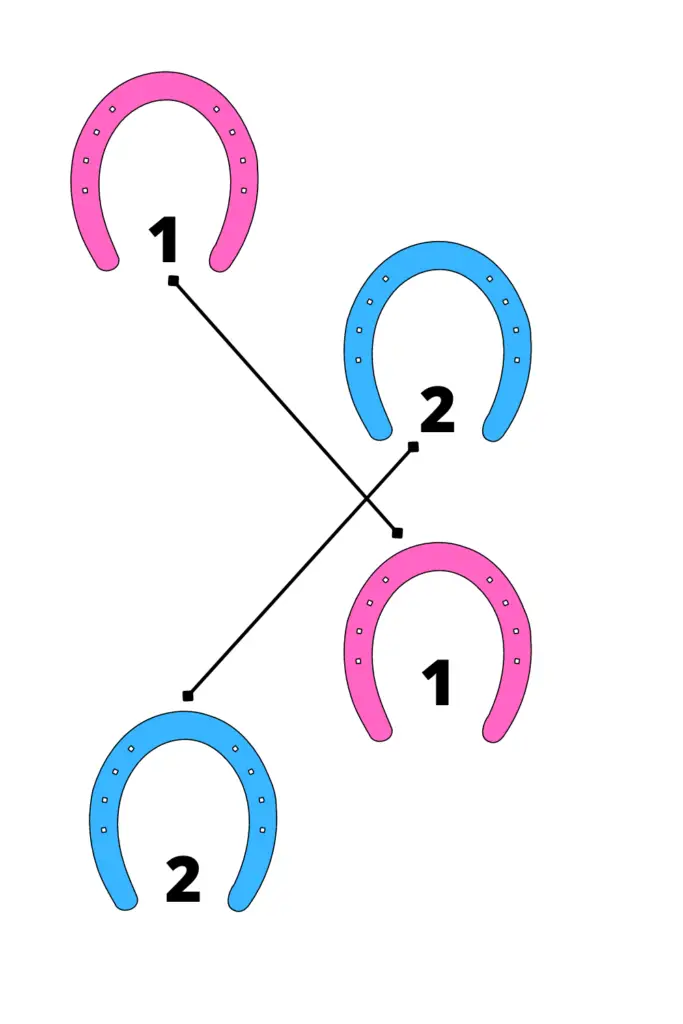
Identifying Diagonals From The Ground
Next, watch the horse’s legs in the video below. You’ll notice that two legs move together in a two beat rhythm. As the horse’s right front and left hind move together, or vice versa, the rider posts up and down.
If the horse is tracking left, meaning counter-clockwise, the rider should post on the right diagonal. This way, when the horse’s right front leg and left hind leg are forward the rider is standing up. When the left front leg and right hind leg are forward on the second beat, the rider is sitting.
When the horse is tracking right, the rider should post on the left diagonal, or rise when the left front leg is forward.
Why You Need To Pick Up The Correct Diagonal
When horses travel in the trot, the inside hind leg bares a lot of weight. In order to help free up the horse’s back and legs to take larger strides, we post on the correct diagonal.
Posting on the correct diagonal will allow your horse to balance better when traveling through turns. You will also find it is much more comfortable for the rider.
How To Tell If You Are On The Correct Diagonal
Here’s the tricky part, being able to tell if you are riding on the correct or incorrect diagonal while mounted and trotting.
The two ways to determine your diagonal are to watch the horse’s shoulders or go by feel. Its best to start out by watching the horse’s shoulder first and as you spend more miles in the saddle, you’ll eventually be able to feel it instead.
How To Change Diagonals
Now that you know whether your diagonal is right or wrong, next you need to learn how to change your diagonal.
For example, if you are tracking left but on the left diagonal (rising with the inside front leg) you’ll need to switch. Since the trot is a two beat rhythm you can simply sit twice in a row and when you rise again, you will be rising with the right front or outside front leg.
Although this task is simple, it is far from easy when you’re just getting started.
In the video below the rider sits the trot for the first few steps then begins posting on the incorrect diagonal. She then sits twice in a row and begins posting again on the correct diagonal.
Notice at the beginning she is rising when the horse’s right front leg is forward but the horse is tracking right. Once she changes her diagonal, she begins to rise when the left front leg is forward which is correct.
How To Practice Picking Up The Correct Diagonal
Have your instructor put you on the lunge line during your lesson so that you can focus on learning your diagonals without having to steer your horse.
Now, begin with sitting trot. Watch your horse’s outside shoulder (the shoulder closest to the rail) and say up when the outside shoulder is forward. After three to four strides of saying up correctly, begin posting when you say up. Continue watching the horse’s shoulder to see and feel how you are rising on the correct diagonal.
Next, try the same exercise on the incorrect diagonal. The benefit of doing this on the lunge line is that you will be on a circle instead of going in straight lines around the arena. Learning your diagonals on a circle will help you learn to feel the incorrect diagonal.
Once you can pick up the correct and incorrect diagonal on the lunge line, you’re ready to try it on your own.
Now that you have practiced a few times, it won’t take you as many strides to determine when to rise. This means you can likely steer your horse, look where you are going and peak down at your horse’s shoulder briefly without crashing.
Ways To Practice Changing Your Diagonal
Sit Two, Up Two
In this exercise, trot your horse on the rail. Begin posting, next sit two beats in a row as if to change diagonals. Then, rise for two beats which will also change your diagonal. As you trot around the rail continue trying to sit two beats, rise two beats for a few strides in a row.
This exercise can be difficult so you may need to practice for two or three strides and then post normally for a few strides.
The point of rising for two beats and sitting for two beats is to help you learn the rhythm of the trot and to practice the actual change. Many riders struggle with sitting for two beats and usually sit for three or four when they are first learning.
Practicing this exercise will help learn to change more efficiently when you are on the incorrect diagonal.
Change At A, C, B, E
Another way to practice changing your diagonal is to trot on the rail and give yourself a marker to change at. For example, every time you pass letters A, E, C and B change your diagonal.
There are two benefits to this exercise.
The first benefit is that you practice changing your diagonal frequently and start to get the hang of changing it.
The second benefit is that you will ride both on the correct and incorrect diagonals around the turns. You will start to develop a feel for when your diagonal is incorrect as you trot around each turn.
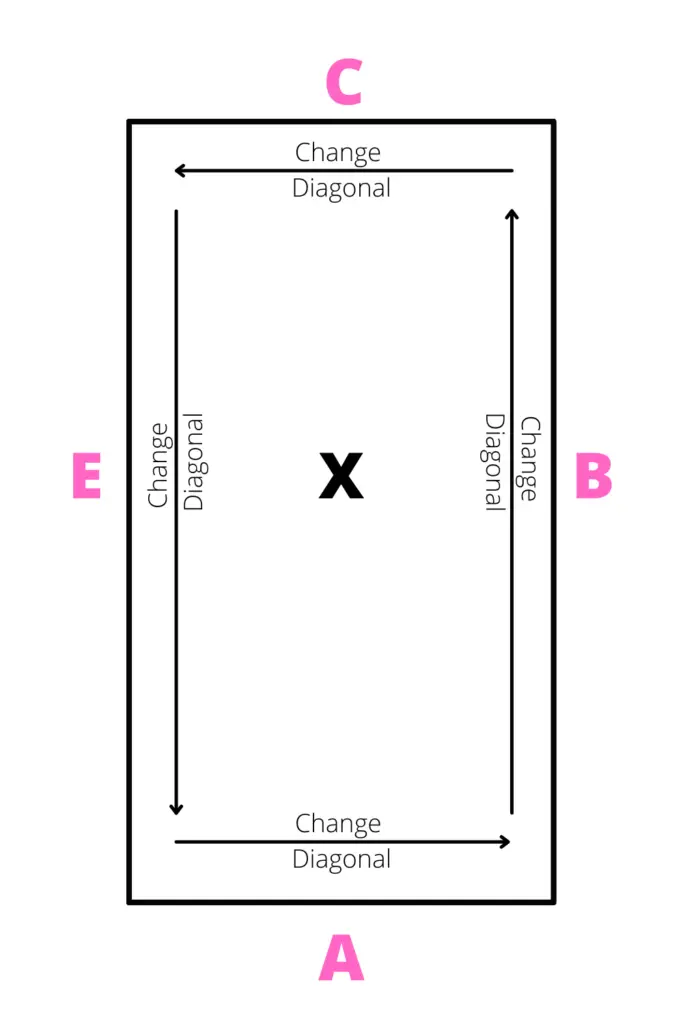
Figure 8
Figure 8’s are another great way to practice your diagonals.
Since we ride on a different diagonal depending on which direction the horse is traveling, changing directions across the middle of the arena will help you learn which diagonal you should be on.
Start by tracking left around the arena, you can either ride straight across the middle of the arena or along the diagonal to make your figure 8.
Every time you ride through letter X (the very center of the arena) change your diagonal.
This helps to signal to your horse that you will be changing directions and help improve your timing and balance at the trot.
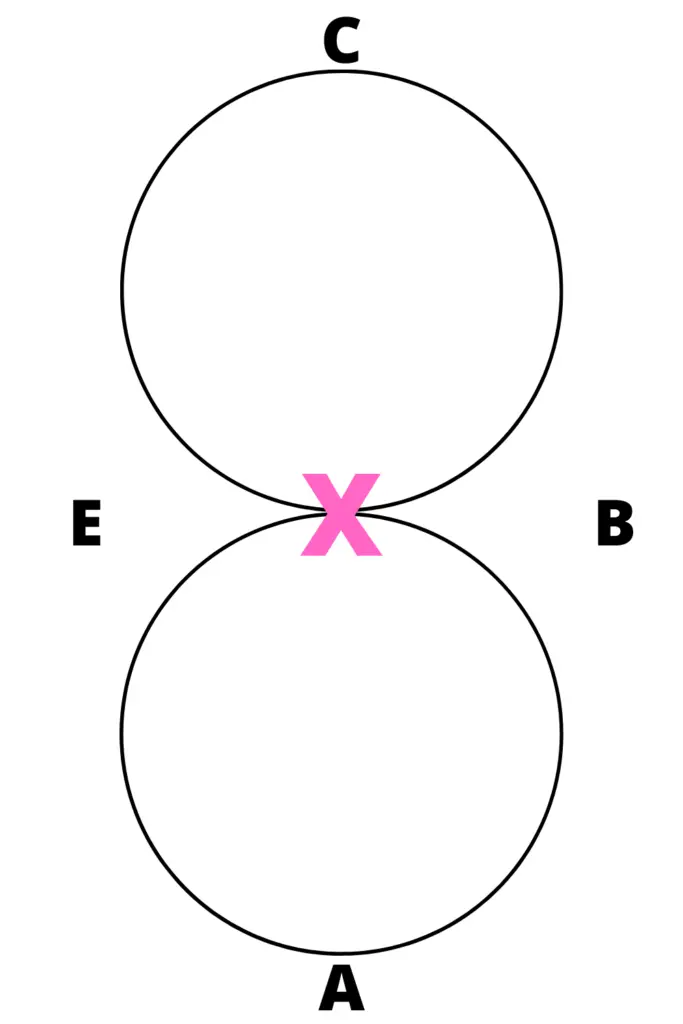
I hope you’ve found this article helpful, diagonals can be challenging to learn and may take some time. So, try not to feel discouraged if it takes you a few weeks to get the hang of it.
Please give this post a share so that other riders can become more confident in learning their diagonals too!
Check out these related articles!
12 Mounted Horseback Riding Stretches To Do Each Ride

